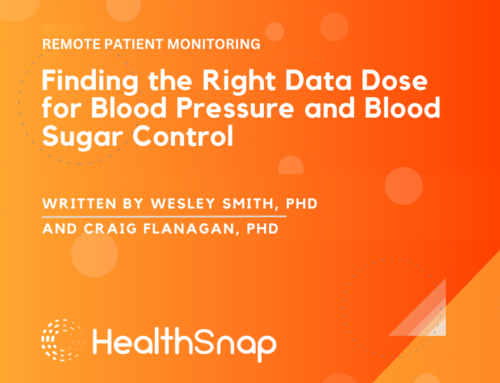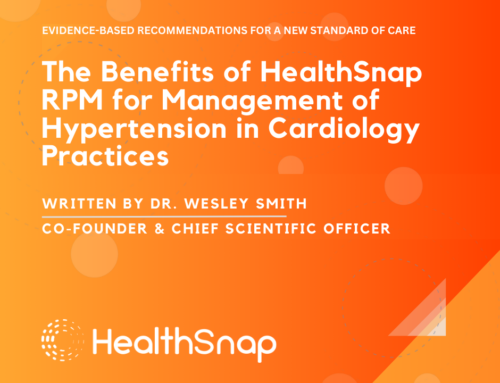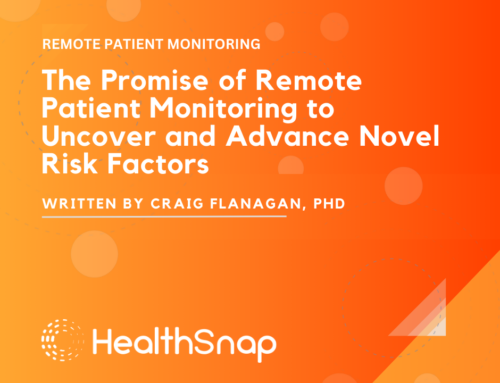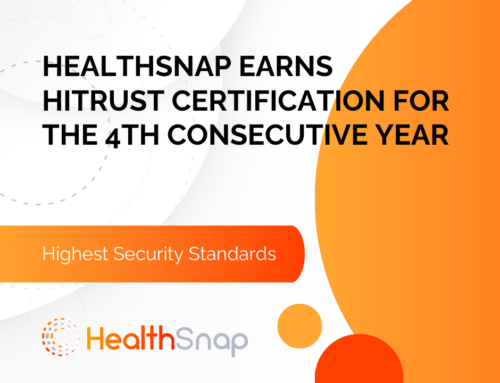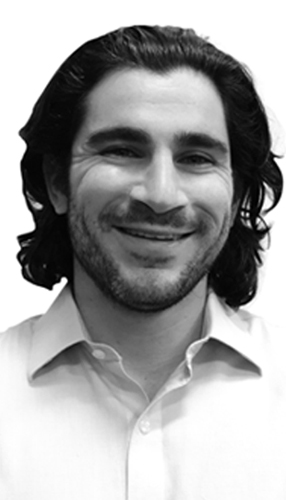At HealthSnap, we’re revolutionizing healthcare with our innovative Virtual Care Management program – that remotely manages patients through ongoing monitoring of physiological variables like blood pressure, and manages their care in accordance with a care plan. The results speak for themselves—our Remote Patient Monitoring (RPM) program not only improves patients’ health outcomes and provides reimbursable revenue for physicians, but also achieves cost savings of over $5,400 per patient with cardiometabolic disease annually.
What is HealthSnap’s RPM Program?
HealthSnap’s RPM program enables patients to track key health metrics, such as blood pressure and blood glucose, using FDA-approved, cellular-enabled devices. These devices automatically transmit real-time health data to our EHR-integrated platform, where a dedicated Care Navigator monitors trends, coordinates interventions, and ensures patients receive timely, personalized care.
Unlike traditional episodic care models, where patients may go months without follow-up, HealthSnap’s Care Navigators maintain consistent communication with patients to provide:
- Medication reminders and adherence support
- Lifestyle coaching and education
- Early interventions for worsening conditions
Additionally, HealthSnap’s platform gives physicians direct access to patient health data and Care Navigator notes, allowing them to monitor trends and intervene when necessary—without requiring an in-office visit. This innovative approach helps ensure that patients stay on top of their health, preventing costly complications before they arise. For people living with chronic conditions like hypertension (high blood pressure) and hyperglycemia (high blood sugar), this kind of continuous monitoring is a game-changer.
Why is This Important?
Chronic diseases such as high blood pressure and diabetes are among the leading causes of heart disease, stroke, kidney failure, blindness, and other serious health issues. They can also significantly shorten lifespan, with individuals affected by these conditions often living up to 10-15 years less than those without them. Traditional care models, with their reliance on occasional doctor visits and lack of care continuity, often miss early signs of problems. That’s where HealthSnap’s RPM program steps in—providing constant monitoring, early interventions, continuity of care with a dedicated care navigator, and actionable insights to help patients stay healthier.
What Did Our Study Find?
Our recent study evaluated the effectiveness of HealthSnap’s RPM program in helping patients manage heart disease and diabetes, and the results were overwhelmingly positive. Not only did the program improve health outcomes, but it also provided significant cost savings. Here’s a closer look at what we discovered:
1. Improved Health Outcomes:
Blood Pressure:
- Patients with blood pressure between 130–140 mmHg saw an average reduction of 4.3 mmHg.
- Those with blood pressure between 140–150 mmHg saw an average reduction of 9.8 mmHg.
- Patients with blood pressure between 150–160 mmHg saw an average reduction of 17.2 mmHg.
- For those with blood pressure above 160 mmHg, saw a significant reduction of 28.9 mmHg.
These changes are significant because even small reductions in blood pressure can greatly reduce the risk of heart attacks and strokes. 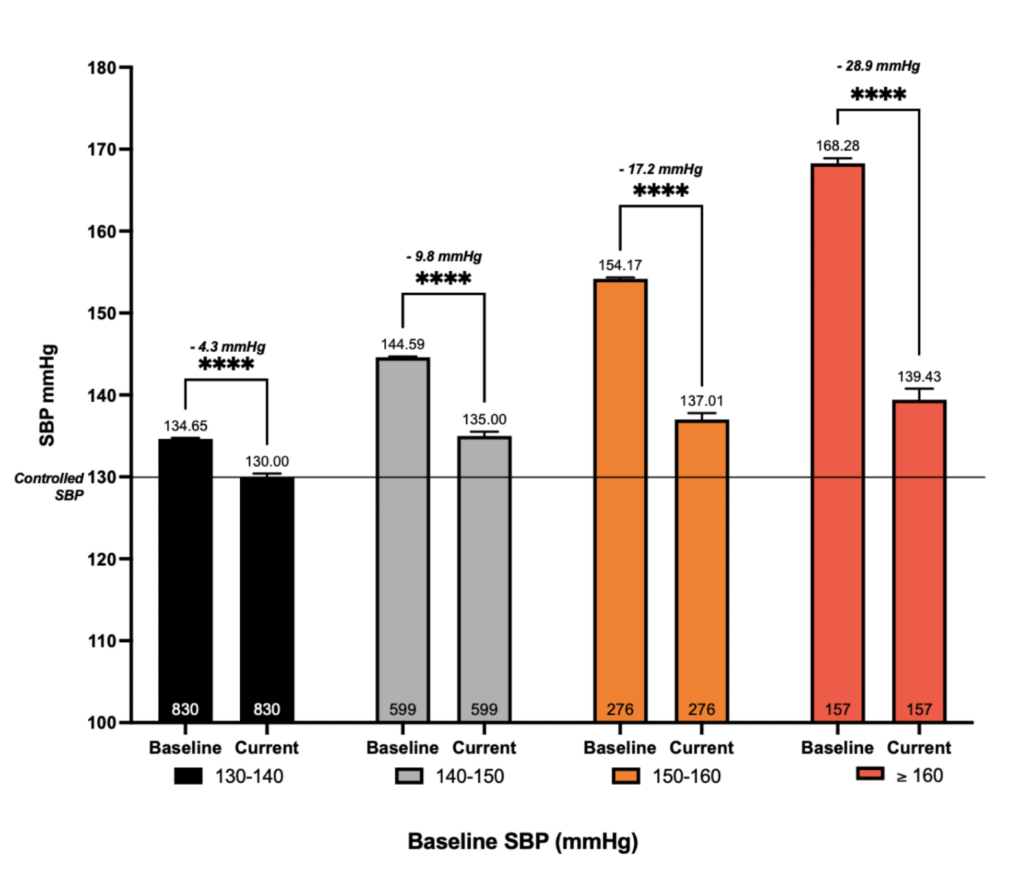
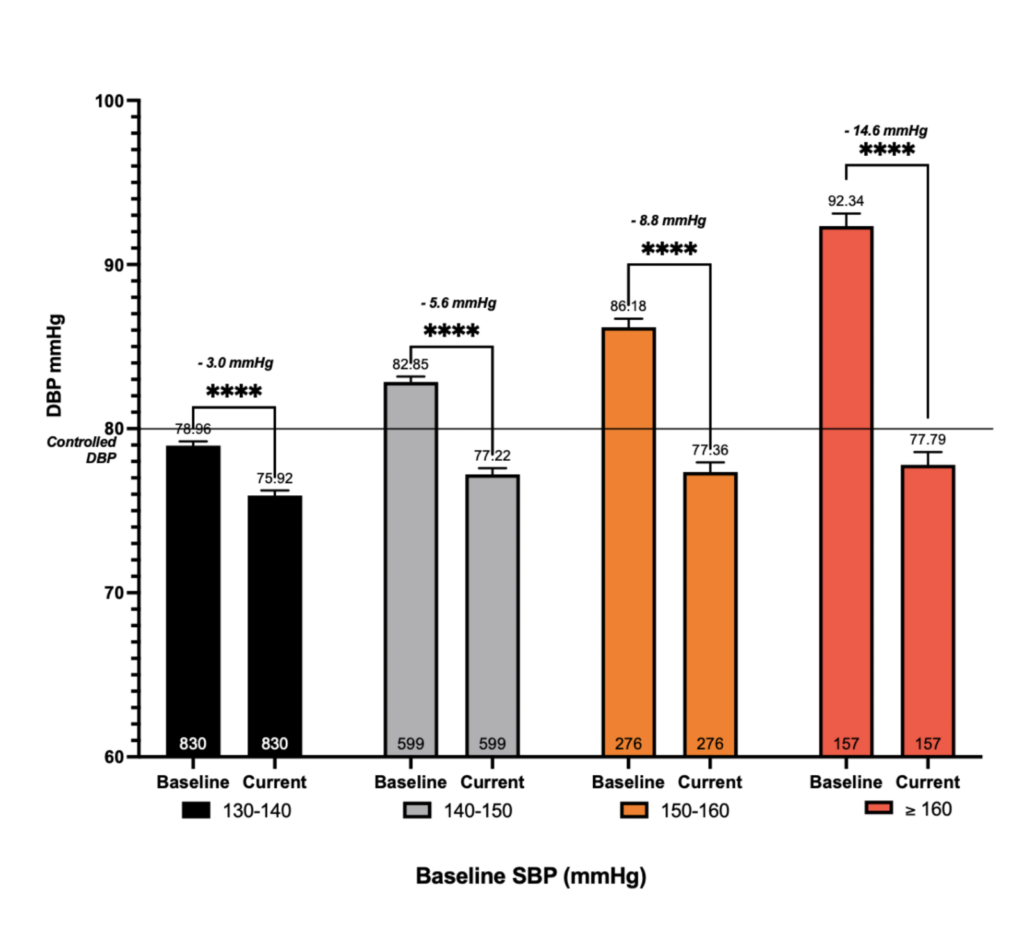
Blood Sugar:
The RPM program also helped patients with high blood sugar (diabetes) achieve impressive results across all classifications, demonstrating the effectiveness of RPM interventions in managing diabetes. A total of 520 patients were included in the analysis, with baseline and recent data classified as follows:
| Blood Glucose Classification | Baseline Count (%) | Recent (12/6/2024) Count (%) | Change in Classification |
|---|---|---|---|
| Controlled (≤ 125 mg/dl) | 219 (42.1%) | 237 (45.6%) | +18 (+8.2%) |
| Diabetic (126–179 mg/dl) | 237 (45.6%) | 245 (47.1%) | +8 (+3.4%) |
| Severe Diabetes (≥ 180 mg/dl) | 64 (12.3%) | 38 (7.3%) | -26 (-40.6%) |
- Baseline FBG Status:
- Non-diabetic (≤ 125 mg/dl): 219 patients (42.1%)
- Diabetic (> 125–179 mg/dl): 237 patients (45.6%)
- Severe Hyperglycemia (≥ 180 mg/dl): 64 patients (12.3%)
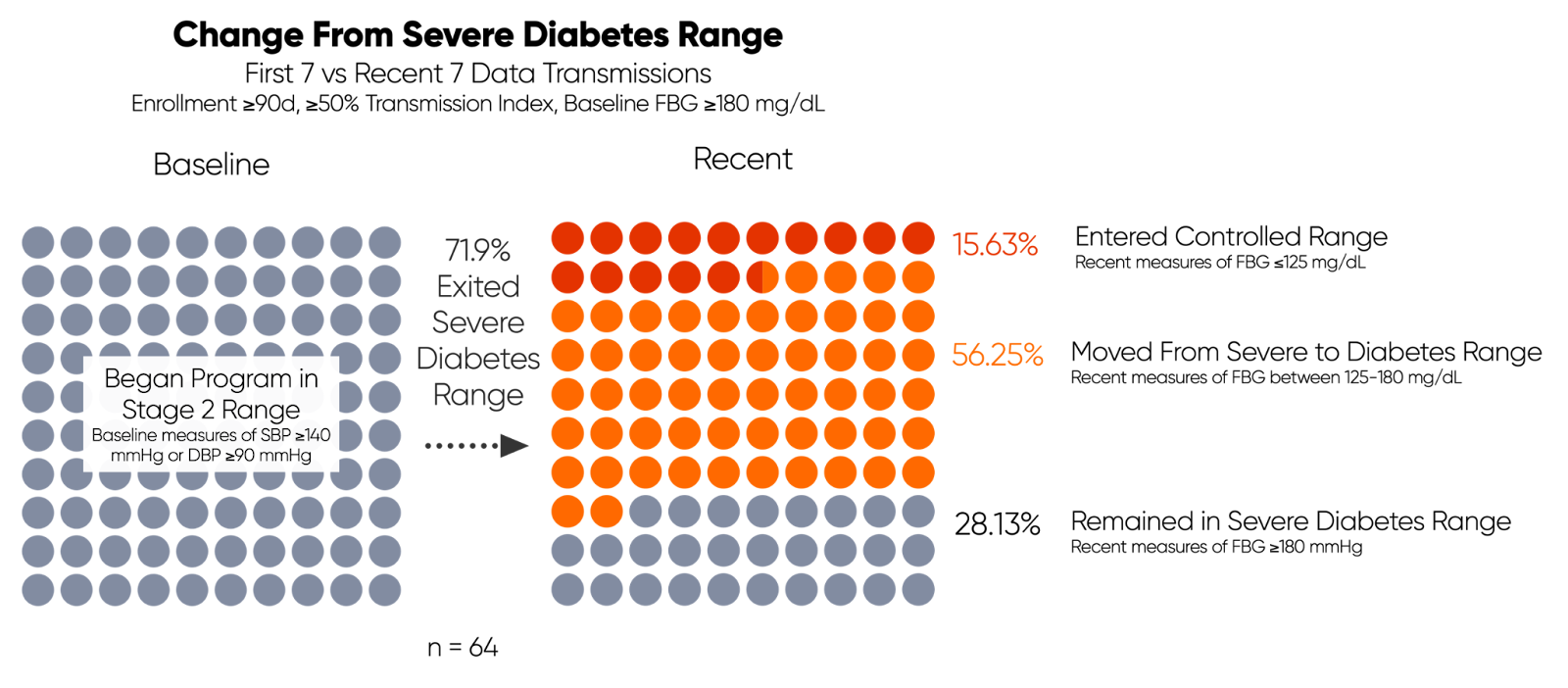
- Outcomes in Severe Hyperglycemia (≥ 180 mg/dl):
- 71.9% of patients reduced their FBG to levels below 180 mg/dl.
- 15.7% achieved the controlled range (≤ 125 mg/dl).
- On average, patients in this cohort reduced their FBG by 57.8 mg/dl, reflecting substantial clinical improvements.
41.6% of patients with Stage 1 hypertension (mild high blood pressure) achieved normal blood pressure (below 130/80 mmHg).

57.3% of patients with Stage 2 hypertension (higher blood pressure) reduced their pressure to safer levels (below 140/90 mmHg).

2. Patient Engagement = Better Results:
Patients who submitted more frequent data (daily blood pressure or blood sugar readings) saw much greater improvements in their health.

HealthSnap’s Care Navigators are instrumental in keeping patients engaged through regular check-ins, education, and ongoing motivation, ensuring they remain committed to their care plans.
3. Cost Savings:
Perhaps the most interesting part of our study is the financial impact of the RPM program. Using propensity score matching for a cross-sectional analysis, we found:
- Patients with heart failure and diabetes using HealthSnap’s RPM program spent, on average, $452.66 less per month on healthcare compared to those who did not use the program.
- This amounts to an annual savings of $5,431.92 per patient.
These savings were driven by fewer hospitalizations, emergency room visits, and the prevention of expensive complications that would otherwise require urgent medical care. Even though RPM patients had more regular check-ins with their doctors, their overall healthcare costs were significantly lower.

Why This Matters
The results of our study show that HealthSnap’s RPM program isn’t just good for patients’ health—it’s also incredibly cost-effective. By providing continuous monitoring, we can help patients stay healthier, avoid costly hospital visits, and reduce the overall financial burden of chronic disease management with little to no cost to patients.
With healthcare costs skyrocketing across the country, finding ways to deliver high-quality, affordable care is more important than ever. Our RPM program offers a scalable, proactive solution to help people with chronic conditions like hypertension and diabetes stay healthy while keeping costs down.
In Conclusion
At HealthSnap, we’re proud of the results our Virtual Care Management program has achieved—improving health, saving money, and reducing the need for costly hospital visits. By providing continuous monitoring and early interventions, we’re helping people with chronic conditions like high blood pressure and diabetes lead healthier lives at a fraction of the cost. The future of healthcare is here, and it’s all about staying connected, staying healthy, and saving money.
Want to achieve these results for your practice? Schedule time with our team to learn more about how our RPM program can help you drive the same outcomes!


